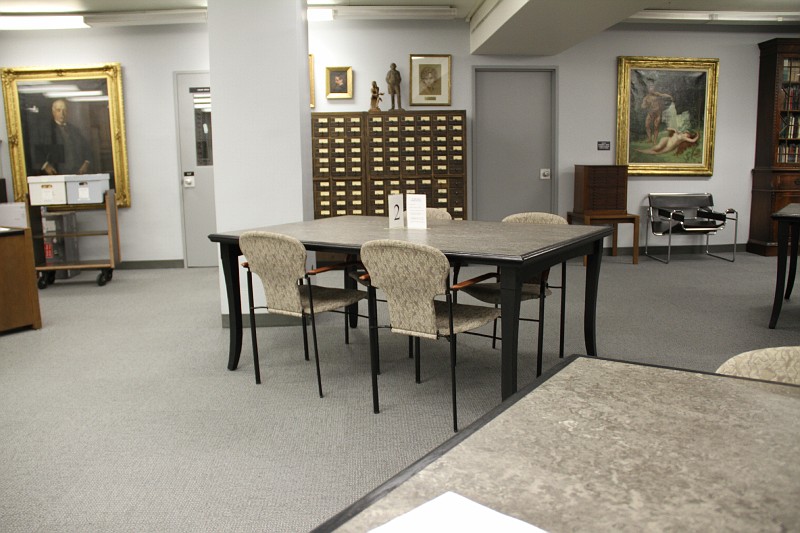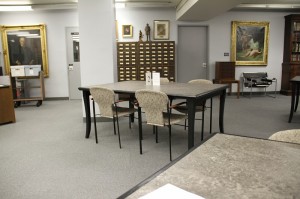The Fales Library (It looks really boring in this photo but I promise that it harbors some incredible resources!!!)
Hello Everyone,
After studying abroad last semester in Buenos Aires, I’ve been spending the past month trying to re-adjust myself to New York’s chaos. It hasn’t been easy, but this research project has helped ground me by reminding me of all of the reasons why New York is worth loving (even when it doesn’t love you back). My project is essentially an exploration of New York City’s temporal music landmarks, both historical and contemporary. The eventual goal of this project is to construct some sort of urban mapping of DIY venues that have surfaced, or disappeared, over the past ten years in New York City, particularly in Brooklyn. However, my project has become much more expansive than I originally expected it to be, and the oral history component has begun to feel like too big a responsibility to complete in a summer. Additionally, it’s impossible to illustrate the significance of these transitory spaces without emphasizing the chronic impermanence of the physical musical landscape in New York over time. For this reason, I am focusing the bulk of my research on the socio-political climate of the city from the 1970s to the present, questioning how much economic restructuring and gentrification has taken a toll on the alternative, or underground rock, and rock-derivative community in New York in the years since punk broke. I am not putting the oral history component to the side, but rather, allowing it to remain an open-ended aspect of my project that I will continue to work on as a senior project—gathering interview recordings, transcribing, and eventually constructing a working oral history of the contemporary DIY scene in New York. I’ve been looking into so many different things that it’s overwhelming to summarize, so this post will explore a small aspect of my work so far.
Over the past month, I have been reading books, attending an excessive number of shows, and investigating the archives at the Fales Library. After spending countless hours digging through archives, I consider the Fales Library to be NYU’s greatest asset. I decided that the most logical way to begin my project would be to investigate one of NYC’s most famous musical landmarks, CBGBs. Rather than look into the history of the space, which is an almost boring topic at this point, I investigated primary source material that would indicate to me the sentiment of the venue, rather than the actual story of the place itself. I went through the Downtown Archives, focusing primarily on the Nightclubbing collection as well as the Richard Hell papers in order to have an idea of the way musicians felt about the venue at the time. I watched an interview with Lenny Kaye, and read Richard Hell’s diary, and consulted many other sources, such as the first run of PUNK magazine. Above all else, the musicians who discussed CBGB’s emphasized the feeling that they had performing at, or hanging out in the bar. It was a space that cultivated a homegrown music scene and provided a sense of promise and hope that there was a space for even the most experimental, against-the-grain New York artists. Although the early New York punks would eventually be canonized, they got their start playing in Hilly Kristal’s Bowery dive, and that will always remain a very important part of their rise to fame.
This sentimentality is a central theme in my project—the notion that regardless of what a venue looks like, whether the bathroom works or not, if they sell draft beer, if their sound system works, etc. what attracts people to these spaces is the feeling that they might see something unbelievable, something that they’ve never seen before. When 285 Kent closed at the beginning of this year, there was an overwhelming online mourning of the warehouse space, which I originally thought was somewhat undeserved (I didn’t have any significant memories attached to the place). But the more I investigate venues, both DIY and otherwise; I realize that people will always have an affinity towards the places where they cultivated incredible memories. Documenting some of these memories is my next step.
Thus far my project has felt a bit too academically inclined for the subject matter, and I plan on creating a visual representation of my research to be reproduced and distributed during our presentations in January. Additionally, Vanessa Castro and I are meeting on Monday to discuss the possibility of throwing a show/after party to celebrate her curatorial work featuring local female musicians. The event is hopefully going to take place at one of the spaces that I’ve been investigating—stay tuned!
Thanks for reading! I look forward to seeing how the rest of these projects develop over the course of the summer.
Gabriela

